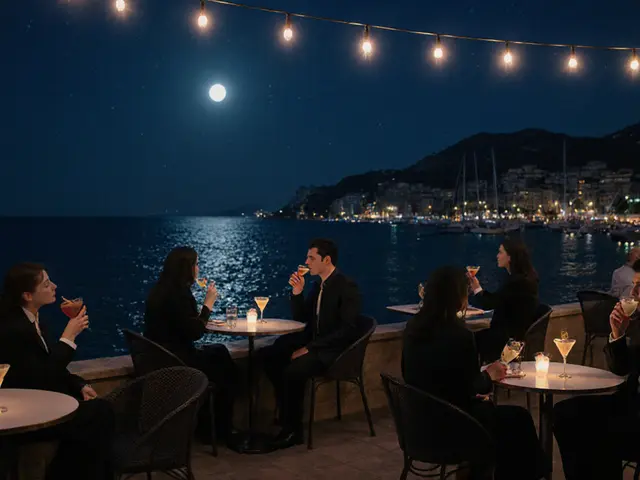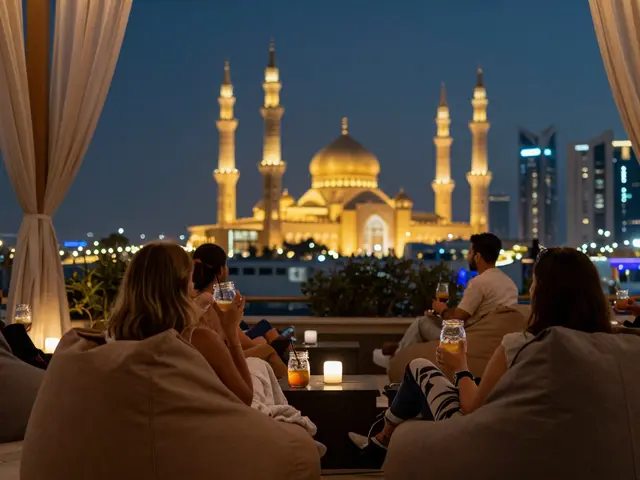London doesn’t sleep. Not really. By 10 p.m., the city’s streets are humming with people moving from one place to the next-some in suits, some in glitter, all chasing something real. It’s not just about drinking. It’s about music that shakes your ribs, laughter in hidden rooms, and the kind of moments you remember because they felt alive. If you’ve only seen London by day, you haven’t seen it at all.
The Windmill, Brixton
Don’t let the name fool you. The Windmill isn’t a pub. It’s a basement dive that became legendary for one reason: it gave space to the weird, the wild, and the wonderful. Since the 1970s, this unassuming brick building has hosted punk bands, drag queens, and underground DJs before they were famous. The walls are stained with decades of paint, the stage is barely raised, and the bar is always crowded. But that’s the point. This isn’t a venue for tourists with cameras. It’s for people who want to feel like they stumbled into something secret. The cover charge? Usually under £5. The vibe? Priceless.
The Piano Bar at The Langham
If you’re looking for elegance without the pretense, The Piano Bar delivers. Located in the heart of Mayfair, this space feels like stepping into a 1930s jazz lounge-only better, because the pianist actually knows every song you’ve ever hummed. No loud bass, no strobe lights. Just a grand piano, soft lighting, and a cocktail list that includes classics like the Old Fashioned and the Aviation. The crowd? Lawyers who’ve had a long day, tourists who appreciate quiet luxury, and locals who know this is one of the few places in London where you can actually hear yourself think. Order the smoked maple Old Fashioned. It’s the kind of drink that makes you want to stay all night.
Fabric, Clerkenwell
Fabric isn’t just a club. It’s a rite of passage. Open since 1999, it’s one of the few places in the world that still treats electronic music like an art form. The sound system? Custom-built by the same team that designed the ones for major festivals. The lighting? Designed to move with the beat, not drown it. And the crowd? Serious. People come here to lose themselves in techno, house, and bass-heavy rhythms-not to take selfies. The dance floor is split into two rooms: Room 1 for deeper, slower grooves; Room 2 for high-energy beats. Both are packed by midnight. And yes, you’ll need to dress like you mean it. No flip-flops. No hoodies. Just good shoes and an open mind. The club closes at 5 a.m., but the music doesn’t stop until the last person leaves.
The Ten Bells, Spitalfields
This pub has been around since 1863. It’s small, dim, and smells faintly of old wood and ale. But what makes it unforgettable? History. The Ten Bells was a favorite haunt of Mary Ann Nichols, one of Jack the Ripper’s victims. Today, it’s a quiet sanctuary for those who like their nightlife with a side of mystery. The staff don’t push drinks. They just pour. The jukebox plays everything from blues to Bowie. And the back room? Often used for poetry readings and acoustic sets. It’s not loud. It’s not flashy. But if you’ve ever wanted to sit in a place where time feels thin, this is it. Try the bitter on tap. It’s the same one they’ve served since the 1980s.
Secret Cinema at The O2
This isn’t a nightclub. It’s an experience. Secret Cinema turns movie nights into full-blown immersive theater. You don’t just watch a film-you enter it. One night you’re in 1920s Paris for a screening of The Great Gatsby. The next, you’re navigating a post-apocalyptic wasteland for Blade Runner 2049. Tickets cost £60-£100, but you’re not just buying a seat. You’re buying a costume, a backstory, and a night where you become part of the story. The O2’s cavernous space transforms into forests, train stations, or underground bunkers. Staff act as characters. Food and drinks are themed. And no one leaves without a story to tell. It’s expensive. It’s wild. And it’s the closest thing London has to magic.
The Glory, Shoreditch
If you’ve ever wondered what queer nightlife looks like when it’s unapologetically bold, The Glory is your answer. This venue started as a gay pub in the 1980s and evolved into a cultural hub for drag, cabaret, and alternative performance. The shows here aren’t polished. They’re raw, funny, and sometimes heartbreaking. Drag queens perform lip-sync battles with live bands. Comedians roast the audience. DJs spin everything from disco to hyperpop. The crowd? Diverse, loud, and completely themselves. There’s no dress code. Just bring your energy. The bar serves cheap gin and tonics and cocktails named after pop stars. The bathroom walls? Covered in glitter, lipstick, and handwritten notes from people who came here to feel seen. If you want to understand London’s soul, this is where you start.
Annabel’s, Mayfair
Annabel’s is the kind of place that feels like it was built for movies. Hidden beneath a townhouse on Berkeley Square, it opened in 1963 as a private members’ club for the elite. Today, it’s still exclusive-but not unreachable. Walk in after 10 p.m. and you’ll find a glittering ballroom with velvet booths, crystal chandeliers, and a jazz trio playing standards. The bar serves rare whiskies and champagne by the glass. The dress code? Sharp. No jeans. No sneakers. Think tailored jackets and evening dresses. It’s not for everyone. But if you’ve ever wanted to feel like you’ve stepped into a James Bond film, this is your chance. The staff remember your name. The music never stops. And the night? It ends when you’re ready.
What Makes a Nightlife Spot Iconic?
Not every club that’s popular is iconic. An iconic spot has history, character, and a reason people keep coming back-even when trends change. The Windmill survived because it never tried to be trendy. Fabric stayed relevant because it never lowered its standards. The Glory thrives because it gave space to voices no one else would listen to. These places don’t chase viral moments. They build legacies. And that’s why, even in a city where new bars open every week, these names still matter.
When to Go
London nightlife isn’t one-size-fits-all. If you want underground beats, hit Fabric on a Friday. For live music and raw energy, The Glory on a Saturday. For quiet elegance, The Piano Bar on a Wednesday. Secret Cinema runs on weekends, but tickets sell out months in advance. The Ten Bells is always open, but the best time to sit in the back room is after 11 p.m., when the regulars start telling stories. And if you’re visiting from abroad? Avoid bank holidays. The city gets packed, and the vibe shifts from authentic to overcrowded.
What to Bring
- Good shoes-you’ll be standing or dancing for hours.
- Some cash-many places still don’t take cards for drinks.
- A sense of curiosity-the best moments happen when you don’t know what’s coming next.
- Respect-London’s nightlife is diverse. Don’t treat it like a theme park.
Final Thought
London’s nightlife isn’t about checking off clubs. It’s about finding the place where the music hits just right, where the strangers around you become your friends by sunrise, and where you leave feeling like you’ve lived a little more than you did when you arrived. The spots on this list aren’t just venues. They’re storytellers. And if you let them, they’ll tell you something about the city-and yourself-that you didn’t know before.
What’s the best night to go out in London?
Friday and Saturday are the busiest nights, especially for clubs like Fabric and The Glory. But if you want a more relaxed vibe, try Wednesday or Thursday at places like The Piano Bar or The Ten Bells. Weeknights are quieter, cheaper, and often more authentic.
Is London nightlife safe at night?
Yes, but like any major city, it pays to be aware. Stick to well-lit areas, avoid unmarked alleys, and use trusted transport like black cabs or Uber. Most venues have security, and police patrols are common in nightlife districts like Soho and Shoreditch. Don’t leave drinks unattended, and trust your gut-if something feels off, leave.
Do I need to book tickets in advance?
For clubs like Fabric and Secret Cinema, absolutely. Fabric often sells out on weekends, and Secret Cinema tickets disappear within minutes. For pubs and bars like The Windmill or The Glory, walk-ins are fine. Always check the venue’s website before heading out.
What’s the dress code in London nightclubs?
It varies. Fabric and Annabel’s have strict dress codes-no sportswear, no trainers. The Glory and The Windmill are casual. The Piano Bar leans smart-casual. When in doubt, dress a little nicer than you think you need to. It’s better than being turned away at the door.
Are there any free nightlife options in London?
Yes. Many pubs offer free live music on weeknights. The Jazz Cafe in Camden often has free entry before 9 p.m. Some bars in Peckham and Brixton host open mic nights with no cover. Check local listings on Time Out London or resident websites. You don’t need to spend money to have a great night out.


